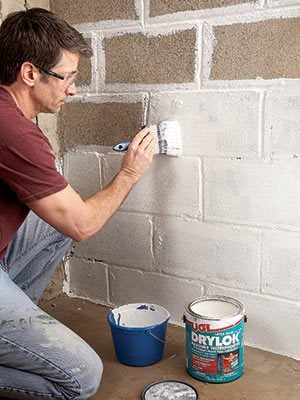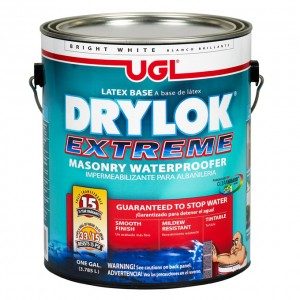A Drier Basement with Drylock Extreme
Updated: Feb. 06, 2024
As a contractor, finished basements always make me a little nervous, and I usually won’t take on a basement job unless I can waterproof the walls first.
Sponsored by Drylock.
Before this spring, the last time I’d used a Drylock product was about five years ago, when I used the Masonry Waterproofer to coat the block walls in a damp, musty-smelling basement that I was finishing. All the walls were going to be covered with insulation and drywall, and I wanted to make sure they stayed dry and mold-free.
As a contractor, finished basements always make me a little nervous, and I usually won’t take on a basement job unless I can waterproof the walls first. I’ve been in too many basements with moldy drywall and a dehumidifier that never shuts off.
It’s a tough problem, because basements are below ground level. When the ground gets wet, the water wants to level out and fill up the hole created by the basement. Several feet down, there’s a surprising amount of pressure pushing that water.
Since block foundations aren’t waterproof, especially after years of settling, water will wick through if the exterior isn’t perfectly sealed — which it usually isn’t. So you’re basically trying to plug thousands of tiny holes in a big, leaky dam.
I often wake up in the middle of the night so that I can obsessively worry for an hour or two about jobs I’ve done, and my finished basements are always in the Top 10. I imagine water pouring in through poorly waterproofed walls, soggy insulation, toxic black mold, wood rot, houses collapsing, major lawsuits, bankruptcy, and my life in ruins.
Fortunately, the Drylock waterproofer held up. The homeowners called me back last year to add a bathroom to the finished basement I had done for them, and everything looked and smelled completely dry.
All that worrying for nothing.
Anyway, because I’m a contractor, I never get around to working on my own house, and I’ve been ignoring the damp walls in my unfinished basement for years. But this spring was pretty wet. When I saw water trickling down the walls and some patches of mildew starting, I realized it was time to deal with the problem.
After scrubbing off the mold with a bleach solution, I went over all the walls with a stiff wire brush, and then vacuumed up all the dust. I cleaned off a few patches of white efflorescence with a masonry cleaner called Drylok Etch, then rinsed those spots well.
After everything was dry, I patched a few cracks and holes with Fast Plug hydraulic cement (another Drylok product that I use a lot), then started rolling and back-brushing, working the Drylock waterproofer into the pores of the block. I decided to use Drylok Extreme this time because I was worried about the mildew.
Drylock Extreme has a 15-year transferable warranty, which also makes a difference to me. A lot of companies make extravagant promises, assuming that years down the road nobody will remember. But Drylock is an American company that’s been selling waterproofing products for a long time, so it has a solid history.
I had the Drylock waterproofer tinted a soft off-white, and after two coats my basement looked great. It rained buckets the other day, so I went downstairs with a bright light to cheap; I have a big basement. But when I saw those dry walls, I knew Drylock Extreme was a good investment.
— Eric Smith, Contributing Editor

